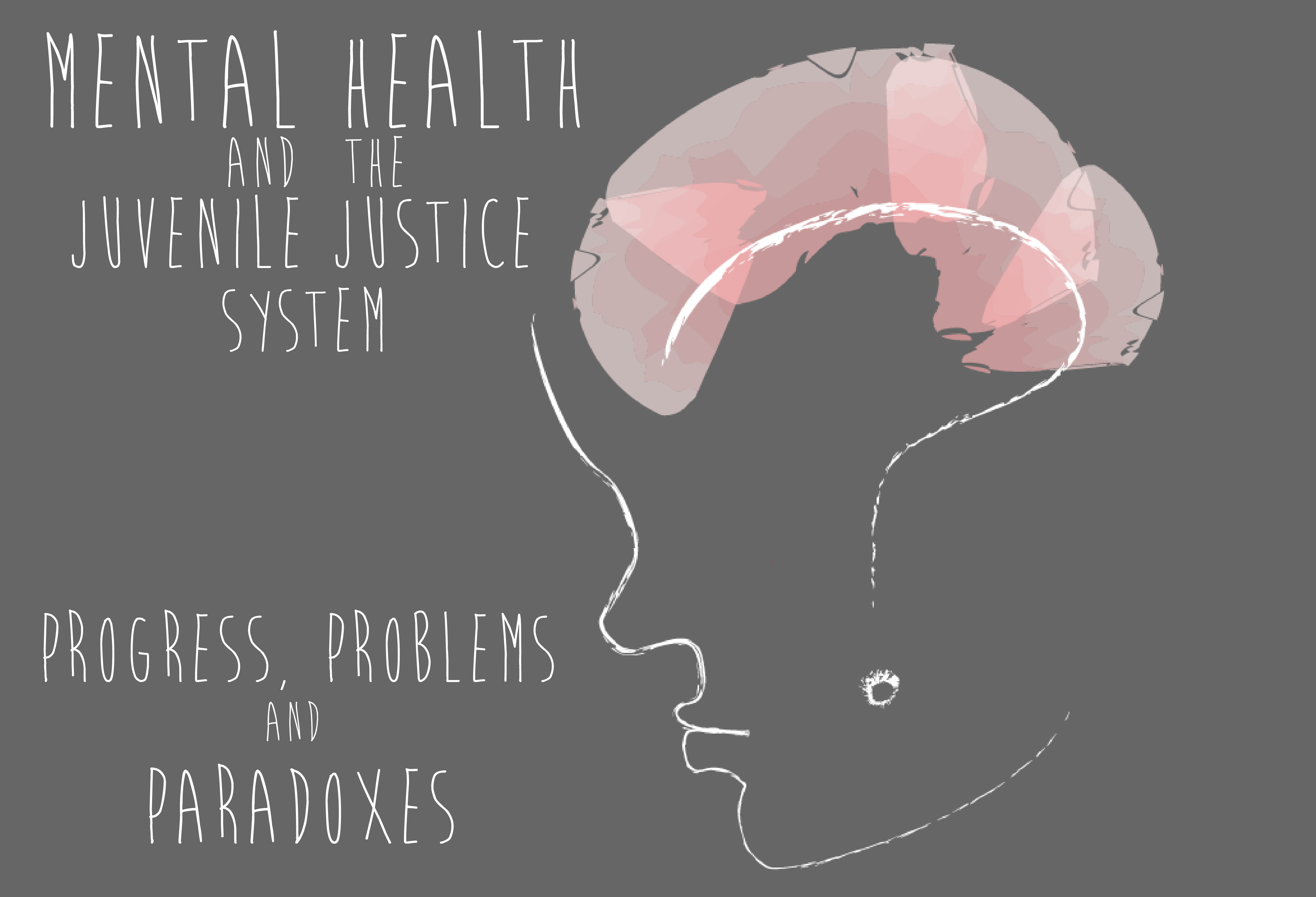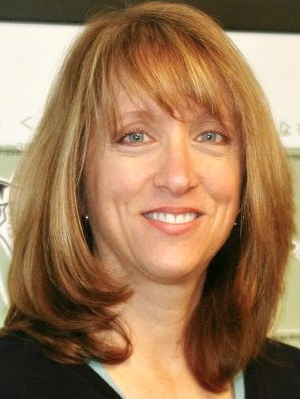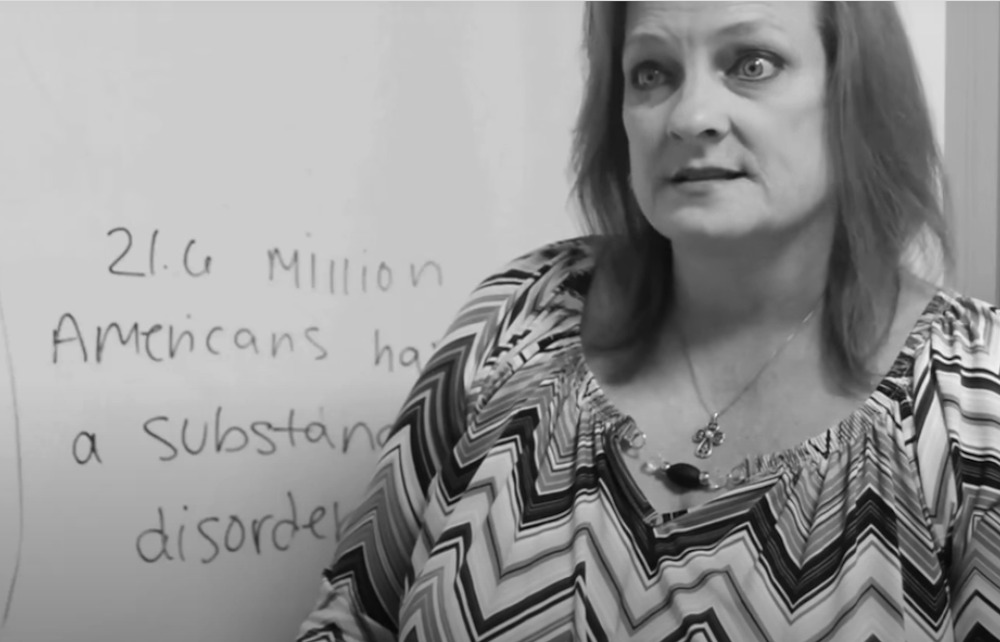Davis Owen, 20, died of a heroin overdose on March 4, 2014. Six weeks earlier, he had finished 21 days in an inpatient treatment facility, and he was enrolled at the time of his death in a nine-hour-per-week outpatient program.
His mother, Missy Owen, said the family had “very good insurance” with Aetna from her husband Michael’s job with autotrader.com in Atlanta (she worked as a guidance counselor with the Cobb County School System). But Owen’s coverage limited inpatient treatment for substance abuse to 30 days per year, “meaning that if in 30 days you’re not better, you can try again next year,” Owen notes wryly, perhaps bitterly.
The Owens also discovered that while the “medical” part of inpatient care was covered, “housing wasn’t covered, this wasn’t covered, that wasn’t covered,” she says. “But yet the rehab package had to include all these other things.” So while the family’s insurance might have been “very good” in general, when it came to drug rehab coverage, “it was very, very sorry coverage,” Missy Owen says.
Read more about substance use disorder on Youth Today and JJIE.
Aetna says that while treatment of drug and alcohol abuse traditionally amounted to a 28-day inpatient or residential program, that has given way to an “array of treatment settings.” In a written statement sent by spokesman Matthew Clyburn, the company continued, “We understand now that treatment of alcohol and drug abuse is a process that occurs over time. … A person’s need for each particular type of treatment is determined by their individual condition, not by pre-determined program duration. Treatment recommendations and coverage also vary based on each individual’s health plan.”
Aetna’s records, released after Michael Owen agreed to sign a HIPAA waiver, show that Davis Owen spent 15 days in inpatient treatment and then the family twice declined an intensive outpatient option. “We approved all 15 days of treatment because the level of care was appropriate,” Clyburn says. “When he was discharged, no additional days were requested or recommended by either the facility or the patient. We twice recommended an intensive outpatient program, but the patient declined.”
Missy Owen recalls the sequence of events slightly differently: She says Davis spent 21 days in the inpatient setting and then the family was next referred to a “three-quarter house.” In this scenario, her son would have been living on his own in an apartment for the first time ever, and the Owens would have been paying more than $2,000 in rent per month, plus buying furniture, kitchenware and other necessities.
“It would have been a completely new setup,” says Owen, who with her husband has since co-founded the Davis Direction Foundation to combat heroin abuse. “You’re trying to decrease their stress, and now you’re putting them into this situation where they’ve never lived alone.”
So the family opted for the intensive outpatient treatment program. Aside from refusing the three-quarter house, the Owens did not question whether Davis was receiving the right treatment and has not pursued litigation against the providers or health insurance companies involved, Owen says.
“I wasn’t fighting with the insurance company” over the 30-day limit, she says, confirming that piece of Clyburn’s account. “We were following what they told us to do. … I was a very young addict’s mother. I didn’t know what I didn’t know. … When they told me my kid was good to go in 21 days, I was like, ‘Thank you, Jesus.’ I had no idea.”
Michael Owen remembers going to see Davis at the end of his inpatient stint and being jubilant at the sight of his son. “I was like, ‘Wow, I’ve got my son back!’” he says. “He had gained weight. His eyes looked great. He was very crisp, very clear. … I was very excited. But unbeknownst to us, as soon as he got home, he was into the throes of his addiction, and trying to hide it and cover it up very well.”
Missy Owen has since learned that a month or less in a rehab center doesn’t do much more than get the drugs out of your system. “They’re not giving you any rehabilitation” in that length of time, she says. “Doctors and treatment centers are now saying in order to heal your brain from damage you received from opioids and heroin takes six months. That’s when treatment can begin. You need a yearlong [inpatient] program, minimum. Insurance doesn’t cover that.”
She notes that her family’s policy with Aetna was not at all atypical. “Most of the insurance companies will give you 21 to 28 days [for inpatient services],” she says. And to pay out of pocket for this treatment, like most families, “You don’t have savings for those kinds of things,” she says. “We planned for college educations. Now we found out you should have started planning at birth for a child to have a disease. You think your children are covered, and then you find out that instead of a college fund, you should have had a disease fund for your kid.”
When young people become hooked on drugs, she adds, “We tell them, ‘Get help. Get help. Get help.’ Yet we make it prohibitive because of insurance. It’s terrible. Kids are dying because they can’t get help. It’s not that they don’t want help.”
Insurance picture brightening — but still hazy
In his final months, Davis Owen was one of approximately 21.6 million Americans — 8.2 percent of those age 12 or older — who were classified as having a substance use disorder in 2013, according to the State Health Care Spending Project, a collaboration between The Pew Charitable Trusts and the John D. and Catherine T. MacArthur Foundation. Of those so classified, only 4.1 million, about 18 percent, received any treatment, the Spending Project says.
While this gap no doubt came in part because many who are substance-addicted are in denial (40.3 percent, according to the 2013 National Survey on Drug Use and Health), a second leading factor (at 31.4 percent in the national survey) is “an inability of people with substance use disorders to afford the cost of treatment, in part because of a lack of health insurance coverage.”
This comes from a report from the Spending Project, which believes the recent legislation — the Mental Health Parity and Addiction Equity Act of 2008 and the Patient Protection and Affordable Care Act of 2010, aka Obamacare — is likely to improve the picture.
The pathway to the juvenile justice system is often littered with substance abuse, notes Judith Glassgold, associate executive director for governmental relations for the American Psychological Association. “A lot of kids get into criminal justice problems through behavioral or emotional issues,” she says. “You need to get at the root of the problem, where you can provide services. It’s really relevant in many ways to the juvenile justice system.”
 Learn more about mental health and substance abuse on JJIE.org’s Juvenile Justice Resource Hub.
Learn more about mental health and substance abuse on JJIE.org’s Juvenile Justice Resource Hub.
Although Davis Owen never ended up in the system, his family’s struggles and frustrations are typical of those trying to get insurance for youth who are hooked on drugs. Yet for decades, only those wealthy enough to afford residential treatment centers had access to services because neither private insurance nor Medicaid provided any, or at least sufficient, coverage.
And despite that recent legislation, the actual delivery of behavioral health care services remains spotty for a variety of reasons.
The Mental Health Parity and Addiction Equity Act mandated that health plans that cover substance abuse do so on equal footing with other types of diseases and ailments in terms of co-pays, deductibles, treatment limitations and other factors. But the act did not require coverage of substance abuse.
The Affordable Care Act took that a step further by mandating coverage of mental health and substance abuse for both Medicaid and for private plans offered on the state and federal healthcare exchanges, which will continue forward with the favorable Supreme Court ruling on subsidies in King v. Burwell. Employer-provided plans are not required to cover substance abuse and mental health, although “most large employers will offer some sort of mental health and substance abuse services,” Glassgold notes.
The joint Pew-MacArthur report quotes Thomas McLellan, former science adviser to President Obama and deputy director of the White House Office of National Drug Control Policy, as saying: “There is no illness that will be more favorably affected [by the Affordable Care Act] than substance abuse. This is the beginning of substance abuse disorders being part of mainstream health care.”
The Affordable Care Act also will affect the treatment of substance use disorders through a provision that provides incentives for states to establish “health homes” among all a patient’s caregivers, the report says. A holistic approach, not a physical facility, these health homes will ensure communication among physical and behavioral health service providers.
Youth and young adults can get an expanded package of benefits under Medicaid due to ACA, and also can stay on their parents’ health insurance plans until they are 26, notes Maria Schiff, director of state health care spending at Pew. Most notably, Medicaid requires “early prevention screening detection and treatment,” referred to in the field as EPSDT.
“It’s very wide-ranging, and it was meant to be wide-ranging, to encompass an umbrella of medically necessary services that a clinician would prescribe,” she says. “Substance use disorder treatment, screening for that and other types of ancillary services would fall under that for Medicaid coverage.”
Benefits still ‘a little bit futuristic’
But struggles to actually obtain services remain, say providers and advocates. “I wish there were really easy answers and that there was plenty of capacity and treatment services available, and I could tell you lots of good news,” adds Becky Vaughn, vice president of addictions at the National Council for Behavioral Health. “Yes, things have changed quite a bit with the Affordable Care Act. The good things are still a little bit futuristic, but we’re moving in the right direction.”
Jeff Zornitsky, director of strategic initiatives with Advocates for Human Potential, a healthcare consulting firm, says remaining challenges include continuing denials of coverage and provider shortages in some areas.
He cites a recent report by the National Alliance on Mental Health that found more than 40 percent of consumers were having difficulty finding mental health care of various types — and that insurance companies were continuing to deny coverage of mental health services at higher rates than other types of coverage. A recent survey by the federal Health Services and Resources Administration found that 36 percent of the U.S. population lives in an area designated as having a shortage of mental health professionals, he notes.
“We are seeing problems around insufficiency in provider networks that are serving as barriers that still need to be addressed,” he says. “There are market issues around how provider networks are being put together by the insurance providers and then issues around whether the rules and regulations governing parity are really being practiced.”
Doreen Cavanaugh, associate professor at Georgetown University’s Health Policy Institute and a senior adviser to the federal Substance Abuse and Mental Health Services Administration (SAMHSA), finds it significant that for the first time, in January, SAMHSA and the Centers for Medicare and Medicaid Services sent out a joint bulletin advising states on how to use Medicaid to cover substance abuse disorders. “We’re seeing progress, but a lot has to be addressed in terms of making that a reality,” she says. “I’m sure a lot of people who would read this would say, ‘Hmmm, I’m not seeing that where I live.’”
The “before” picture provided very little reason for hope, Vaughn says. “It used to be that insurance didn’t necessarily have to cover these services, or if they did, they could use their own set of rules, their own limitations, their own co-pays,” she says. “This made it very much a separate system [for substance abuse], and it was very difficult to find services.”
The Parity Act and the Affordable Care Act have brought a renewed focus to the issue and hopefully will help cause parents to snap out of denial about their youths’ descent into addiction a bit sooner, Vaughn says. “I talk to parent groups, and one of the reasons parents often ignore the situation until it totally gets out of hand is that they don’t have the resources,” she says. “They don’t join support groups because they don’t want anyone to know their child is using. Kids get way down the road before parents start finding help.”
That will begin to change now that substance abuse coverage is mandated under the ACA’s essential benefits and 23 states have elected to expand Medicaid coverage, “so millions of people who heretofore were uninsured became insured and have access, potentially, to mental health and substance abuse services,” Zornitsky says. “The potential — the access net if you will — has been greatly enhanced. … The opportunity to get those services is much, much greater than it’s ever been.”
‘Doughnut hole’
The provider shortage is not surprising and could be addressed in the next half-decade or so, given that gaining the qualifications necessary to become a behavioral health specialist takes four or five years of education, Zornitsky says. “Demand has increased virtually overnight,” he says. “There’s a big lag in the ability of the market to respond.” And that’s happening just as the baby boom generation is starting to retire en masse, which will add to the gaps in providers, particularly in states with aging populations.
This means providers need to think about how to attract and retain substance abuse professionals, who often leave for other professions due to the modest pay, Zornitsky says. “Unless someone is personally committed to the mission of providing those kinds of services, if you look at it economically, the return on investment of their education is significantly lower than if they were a social worker at a hospital,” he says.
Even with the Affordable Care Act in place, barriers remain, Vaughn agrees. While the law might say insurance coverage must provide access to services for adolescents, in rural areas in particular such services simply do not exist within a reasonable radius. Vaughn also sees a “doughnut hole” for college-age youth who don’t have access to on-campus services because adolescent providers don’t like to take anyone age 18 or older, while adult providers often don’t take anyone under age 21.
“We’re convinced that because of Parity and ACA, more people will begin offering adolescent services,” she says. “A lot of our providers have stayed away from it because it’s so different from what they’re doing in their adult programs. We’ve been pushing providers to expand their services, to expand their scope — this is the time to do it because we have so many other funding sources.”
Glassgold of APA agrees that experienced providers are difficult to find in many ZIP codes, particularly providers who deal with teenagers. “What the Parity Act did and ACA expanded is access,” she says. “That’s a big step forward. And it takes away some of the stigma about treatment.”
Given that employer-provided plans are not required to cover substance abuse, “It does pay for families to think about going into the exchanges instead of buying a plan outside the exchange,” she adds. “And also to advocate for their employer to cover substance abuse services as well as mental health.”
Cavanaugh agrees that the issues of building up provider networks and providing adequate reimbursement remain thorny. “You can’t separate financing from your provider network,” she says. “I know a lot of states are currently studying their reimbursement rates and looking at their service array, and putting a lot of time and effort into building out that whole continuum. It’s difficult in urban areas; it’s very difficult in rural areas.”
Most insurance policies do cover addiction services, at least in theory, Vaughn says, because employers began to realize that (even before ACA), while the parity law did not require behavioral health services, not offering those services is “very much cut off your nose to spite your face. If you have families with untreated mental health or untreated addiction, your other health care costs go up the wazoo.”
Not all coverage is the same

Neil Campbell, executive director of the Georgia Council on Substance Abuse.
But as families like Davis Owen’s have learned, even insurance policies that cover services may not do so sufficiently to make a difference. Insurers triage the need for inpatient vs. outpatient placements using different methodologies, Vaughn says, adding that the National Council is pushing both Medicaid and private insurers to use the American Society of Addiction Medicine Placement Criteria, which uses a six-dimension assessment to determine the most appropriate placement for a given patient. Others use the Addiction Severity Index or something comparable, says Neil Campbell, executive director of the Georgia Council on Substance Abuse.
Those sorts of criteria would satisfy Missy Owen’s desire that insurance coverage for addiction be individually determined, not unlike an Individualized Education Plan in a school district. “They don’t base insurance on individual needs; they base it on what they think should happen,” she says. “Maybe there needs to be some kind of add-on to a policy that covers hospitalization, detox, residential rehabilitation.”
Ultimately, Glassgold notes, the Parity Act and ACA only talk about mental health and substance abuse coverage being similar to that of physical health ailments — they don’t mandate what co-pays, deductibles or treatment limitations have to be. “The application of that [parity] gets complicated,” she says. “That’s where it gets sticky. What is an analogous treatment [for a physical health issue]?”
For families like the Owens, she says, the ACA “has pretty robust processes for appealing the length or term of treatment. For group insurance through your employer, I would suggest folks approach their human resources or benefits departments to insure folks get the right services. The challenge is, what is effective? You need robust, intensive outpatient services. The combination or step-down is really important. Most likely a lot of families or individuals struggle to find the best evidence-based care. It’s important for people to advocate for themselves, to make sure they ask about medications, ask about outpatient care, try to find somebody very qualified.”
That’s partly because addiction is a very person-specific illness, Glassgold says. “Addiction is very unlike getting the flu or appendicitis, where you give one generic treatment to people and they get better,” she says. “It’s hard to find personalized treatment that fits the client best. It’s very important to shop around, find someone who is a good fit for the child and adolescent as well as the family. That’s what makes them difficult.”
Groups like Alcoholics Anonymous or Narcotics Anonymous are also key, partly because they help to replace the social structure within which the patient became addicted in the first place, Glassgold says. “They provide social support,” she says. “We’re often asking someone to give up their friends, give up their habits. Finding peer mentors on how to interact differently is really, really important.”
State-level picture
Provider networks are more advanced in some states than others because while the federal Parity Act passed in 2008, regulations were slow to roll out and several states passed their own parity legislation in the meantime, Schiff says. “Certain things are uniform and consistent across the country, and then there are pockets of things that are state-specific,” she says. “The question of, what is coverage for substance use disorders, doesn’t have a one-word answer.”
In addition to Medicaid, states have block grant money available through SAMHSA that’s disbursed to several agencies, which vary by state, for coverage of the uninsured and underinsured, Schiff says. These can include dedicated drug courts, schools, department of transportation and mental health agencies, she says.
Arkansas has been more aggressive than most states in trying to use Medicaid to fund coverage from private providers, but Paul Kelly, senior policy analyst at Arkansas Advocates for Children and Families, is concerned that the newly Republican-controlled legislature is going to roll that back. “My sense is, they wouldn’t dare shut it down,” he says. “They’re going to make some tweaks that may or may not be substantial. So many legislators ran against this health care expansion, they’re going to have to do something to say they made it better.”
Arkansas’ Department of Insurance has worked overall to broaden the options for substance abuse coverage, which was seldom covered prior to the ACA and almost always housed within a hospital where it was provided, says Cindy Crone, insurance deputy commissioner. Under ACA, the state declared that such programs could be community-based and “took the richest behavioral health plan we had at the time and went further in defining some of the eligible providers and services,” she says.
In Georgia, which chose not to expand Medicaid, little has yet come to fruition that would be meaningful for families of substance-addicted youth, says Campbell.
The state has written rules regarding dispensation of substance abuse services that are still too “medical-model-driven,” Campbell says. For example, they mandate the number of days a patient can stay in detox, the need for which can be very different and unpredictable for each patient, as the Owens’ experience illustrates. But she says those rules also treat addiction more harshly in some ways than other types of ailments, seeming to judge those who suffer; for example, those who relapse can be kicked off their coverage.
‘The brain fights the person’
“They kick people out for confirming their diagnosis,” she says. “If it were recovery-oriented, we would say, ‘This didn’t work for you; let’s try another method.’ You don’t stop treating a diabetic because they eat a candy bar. We treat addiction like a moral weakness. If people could look at the brain science of what happens to someone in addiction — that brain has to settle down. There are so many things behaviorally that you have to clean up. Families have to heal. You have to get your reputation and your job back. It takes time.”
“This is the only disease where the brain isn’t interested in getting well,” Vaughn adds. “It just wants more of that substance. The brain fights the person, every step of the way.”
Michael Owen can relate all too well. He remembers his eldest son, the couple’s second of five children, as “that little boy you always wanted. You would find him outside, throwing rocks in the backyard, chasing frogs, swinging a baseball bat, riding a bike, doing little boy things — always getting into some little boy, mischievous trouble, which is what you like to see at an early age.”
As Davis reached his late teens, his father began to notice subtle changes in his son, such as sleeping later than you might expect even a teen to do, and the Owens began asking him if everything was alright.
“There were conversations, but those are very easy to [finesse],” Michael Owen says. More obvious signs of trouble came one day during the summer of 2013 when Davis could barely stay awake, and his mother took him to a drug rehabilitation center. That Thanksgiving, Michael Owen discovered that his shotguns were missing, which were not the first item that had disappeared around the house.
“We got our son up in our bedroom and confronted him. For the first time throughout many, many months of discussions, and face-to-face meetings with him, and trying to get him to … come clean in terms of opening up to us, in terms of what we were dealing with, he started crying,” Davis’ father says. “He was shaking uncontrollably, and crying, and basically said he needed help. That was my big ‘a-ha’ moment.”
A highly intelligent young man, Davis “self-medicated” with both heroin and prescription drugs to deal with stress and try to get some sleep, his mother says. “We always tell 18- and 20-year-olds, ‘Take care of yourself. Be a man. Handle your own problems.’ You can’t say that to these kids,” she says. “He had so much stress, he couldn’t sleep. Davis was very, very bright. He had one of those minds that didn’t shut down.”
![]()
Advice and Resources for Families
Providers and advocates for insurance coverage of drug abuse prevention and treatment for youth shared advice and resources for families. Among their top thoughts:
- You can’t help your son or daughter if you’re in denial about their problem or too paralyzed by the stigma to act, says Becky Vaughn, vice president of addictions at the National Council for Behavioral Health.
- Recognize that you’re dealing with a medical issue — not a moral issue, says Michael Owen, father of Davis Owen, who died at age 20 of a heroin overdose in 2014. “All the morals and values we had taught, they still mattered, but you somehow had to get beyond that with your child to get him to open up,” he says. “The barriers a child may have with you as an authoritative figure — you have to break those down to get to a dialogue. Davis did a very nice job at being that closet addict-type person. Bringing that out in the open was a very difficult and arduous process over time.”
- Primary care physicians or pediatricians can provide trusted referrals to behavioral health specialists, notes Jeff Zornitsky, director of strategic initiatives for health consulting firm Advocates for Human Potential.
- Friends or relatives who have been in similar dilemmas might have a recommendation, and at the very least they can provide comfort, which can be especially welcome given the stigmatized nature of youth drug abuse, Zornitsky says.
- Talk to your insurance provider to find out how well you’re covered, Zornitsky says. They can also pass along names of providers, although you might prefer to ask your family doctor. Those who are on Medicaid can check with their federally designated Community Health Center to receive behavioral health services, Zornitsky says.
- Even if your employer provides insurance, you might want to consider a plan on the federal or state health exchange because the latter are required to provide mental health and substance abuse coverage, says Judith Glassgold of the American Psychological Association. You also can advocate for your employer to cover those services, she adds.
- The ACA provides robust appeals processes for coverage denials, while those with employer-provided coverage can always advocate for themselves with their human resources departments, Glassgold says.
- Ask lots of questions about best practices in terms of treatments and medications and what’s being recommended overall for your youth, Glassgold says. Make sure your provider fits your youth well.
- Youth under age 26 can stay on their parent’s health insurance policies under the Affordable Care Act, while those who are not can gain an expanded package of benefits under Medicaid, says Maria Schiff, director of state health care spending at Pew.
- Your state insurance agency website would have contact information for providers, although Zornitsky would consider that his last choice given the necessarily impersonal nature of such a source.
- State provider associations can help match people up, Vaughn says. Also, the Treatment Research Institute at the University of Pennsylvania has begun a Consumer Reports-like project to rate adolescent treatment providers. “Parents will have something to look at: How do I know what’s a good program?” she says. “It’s a matter of matching up the right kid with the right program. It is still a very difficult issue for many, many parents.
***
A version of this story also appears on The Fix, the world’s leading website about addiction and recovery.































